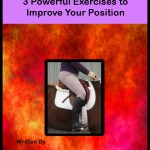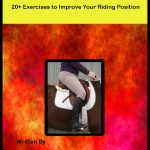Hunter Horse Show, What You Can Learn from Your Worst Hunter Horse Show
After a couple years of going to horse shows, you probably get the gist of what is required and what the judge is looking for. You may get better at predicting which one of your hunter jumper rounds will perform better. Sometimes, however, you just have to go with the flow.
What You Can Learn From Your Best Hunter Round (and the Ones That Flopped)

From the judges side of things, I’ve learned that first impressions count. And remember, in hunter, you are being judged the moment from when you get into the ring until you exit.
The best hunter rounds are the ones which come in organized and on task. This means they know where they are going and they get to the job. No long strolls to show the horse the jumps (although I know some horses do need a few minutes to settle in the ring).
Here’s a few things that are worth taking into consideration:
Most Important Fence
When competing in a hunter horse show it is important to ‘nail’ the first fence. If you come in and get a perfect spot and jump out of stride to the first fence the judge will have a decision made about the rest of the ride and most likely it will be in your favor.
However, if you mess up, chip in, get a long spot, or otherwise ‘miss’ the first fence you will

have to be very good at the remaining jumps to get the judges attention back and win a ribbon. This is particularly true if there is a big class with lots of competitors.
Most Common Mistake
One of the most common mistakes I see hunter horse show riders make is not riding while they are on course. This means sometimes riders get into the ring and float around the course. They expect the horse to do all the work and offer little support or guidance.
My advice, from a judges perspective, RIDE!
By riding I mean:
- Offer your horse some encouragement to get forward to the fence and not chip in (read leg on – don’t be a passenger).
- Offer your horse some contact support and not get the long spots or worse, leave out strides (read – steady on the reins).
- Know where you are going and project this to the horse (read eyes up and ride a turn).
- Complete your round with a finishing circle. Do not just land in an lump and leave the ring. Your transition, lead, trot and walk on your finishing circle could make or break your placing. A finishing circle is part of the round. Ride it as you would a fence which is on the course.
Raise your hand if you’ve ever ridden a course and thought you would get a ribbon.
** raised hand ** I have and you know what? I am still riding, albeit not showing as I used to. Don’t let this get you down when this happens. Just review your successes and plan for a better ride next time.
Review your round and see if it was as really good as the other people who were competing in your class. Sometimes you have to review, re-evaluate and regroup.
Subscribe Below for free personalized tips. Try these three powerful exercises to get strengthen your position.
Try these three powerful exercises to get strengthen your position.
